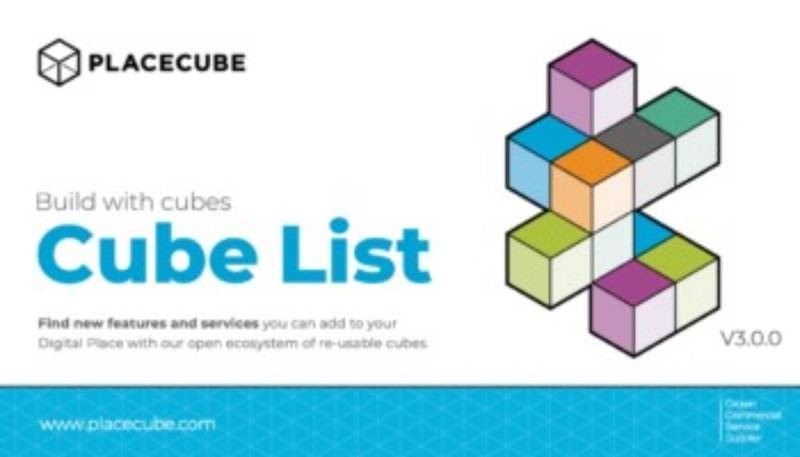Supporting Public Service Transformation “One Cube’ at a Time

Far too often, Public Sector technology is a hindrance to the sector’s transformation aspirations. A frustrating, closed and siloed complex of technologies, stifling the sector’s desires to improve. However, Placecube, alongside its public sector customers is rewriting the narrative at the coding level, with measurable results at the Macro-level. Read on to find out more…
What is Placecube?
The founder of Placecube, Jason Fahy has over 30 years of business experience both in the Public Sector and within the Global Corporate Economy. He is leading Placecube from its 19-year roots as system integrators to becoming a cutting-edge software as a service (SAAS) based subscription provider. It has partnered with several Public Sector and not-for-profit organisations to provide services that are co-created with the sector for the sector.
Jason commented, “Placecube’s mission is to give our subscription customers easier access to open digital platforms through our Digital Place product. We make our customers’ lives simpler with reusable open-source modules, which we call ‘Cubes’. Cubes are built to open standards and communicate through an open application programming interface (APIs). This saves our customers time and money and reduces the risks associated with change.

What is a Cube?
A Cube represents Placecube’s take on the idea of “Lego government” – the idea that it’s time to move beyond closed proprietary monolithic systems at one end of the spectrum, and coding from scratch every time at the other end, to a place where reuse of modern, internet age, digital services built on open standards and open APIs enables the public sector to stop reinventing the wheel for the things they do in common.
At their simplest, Cubes are packages of programming code that are deployed as a single unit to meet a defined purpose or user need – a building block for a joined-up digital experience.
Cubes are based on a modular programming approach and can be constructed using a microservices architecture, but can also be implemented in a coarser-grained “traditional” modular framework like OSGi – which is the approach Placecube use to build its Digital Place product. So, cubes are composed of one or more atomic modules that use services to communicate with each other, through published standard APIs, hiding their implementation details.
However, OSGi isn’t the only way to build Cubes. Placecube wants to ensure that Digital Place operates as an open ecosystem – and that means supporting code that’s developed in other languages, outside the core platform, but that can talk to the services it provides. This relies on the native support for OpenAPI in Digital Place, and the ability to wrap web apps built by other organisations in popular JavaScript frameworks like React, Angular or Vue in such a way that they can be deployed as widgets alongside existing Cubes.
How does Placecube work?
Placecube makes it simpler for organisations to create digital services, integrate systems and personalise user experiences with their Digital Place product. This results in improved outcomes for the end-user, typically citizens and businesses accessing public services, as well as delivering efficiencies. The attractive software model has won Placecube contracts in the UK and Europe.
Placecube works with and enables its customers to design, build, automate, and grow their digital platforms through the build-up of Cubes. Cubes are catalogued as either ‘Experience’, ‘Feature’, ‘Service’, ‘Community’, or ‘Integration’ or ‘Connecting’ cubes. From this menu of options, the Digital Place product is tailored to the customer’s requirements.
Placecube’s ethos is well aligned with Public Sector values, striving always to ‘Do the right thing’, a particularly important goal for both Public and Private sectors in the current socio-political climate.
As Jason added, “We work with our Public Sector customers to co-create open and connected platforms and to accelerate their digital journeys through reuse. We work collaboratively, ensuring that our clients never pay twice for the same development. We work hard to differentiate ourselves through our actions and behaviours”.
What does Placecube’s offering mean for its customers?
Organisations adopting Placecube’s Digital Place product, benefit from a software-as-a-service based, open digital platform that provides them with proven integrated digital services designed by the public sector for the public sector.
Core components to support digital services include CMS, case management, customer contact management (CRM), low code form and workflow builders, and sector-specific page templates. The offering also embeds the powerful Liferay DXP platform, enabling full code capability.
This all means that the public sector can consolidate and level up its offering to service users. With a transparent costing model, and around the clock platform support, organisations can focus on providing and maintaining high-quality customer-facing services.
Jason wrapped up by saying “Placecube believes that this open, modular, standards-based approach provides public service organisations with flexibility and control – and our growing number of customers the seem to agree!”